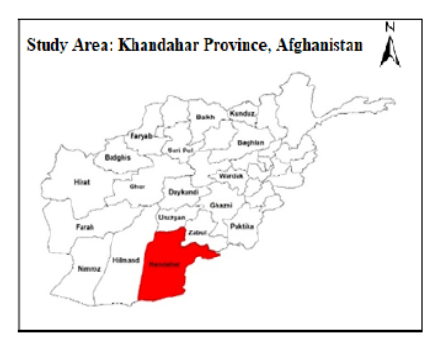


Indian Journal of Science and Technology
DOI: 10.17485/IJST/v15i47.1289
Year: 2022, Volume: 15, Issue: 47, Pages: 2646-2661
Original Article
Mohammad Asalm Haziq1*, Abdul Rahman Ibrahimi2
1Associate Professor, Kandahar University, Engineering School, Water and Environmental Engineering Department, Afghanistan
2Junior Teaching assistant at Kandahar University, Engineering School, Water and Environmental Engineering Department, Afghanistan
*Corresponding Author
Email: [email protected]
Received Date:11 July 2021, Accepted Date:17 November 2022, Published Date:21 December 2022
Objectives: This study aims to identify the potential areas for rainwater harvesting in Kandahar, Afghanistan. Methods: This study used GIS-based RS techniques. Satellite images were used to plan multiple thematic layers, such as lithology, slope, land use/cover, stream order, and soil texture. These layers were then converted into raster data using the raster converter feature of the ArcGIS 10.4 program. In order to come up with a site suitability map for water harvesting structure, multicriteria analysis was then carried out on the different layers, each layer’s characteristics were assigned weights as provided by experts in past research reviews. Owing to their power and their respective class weights, different layers were then overlaid. Findings: The findings showed that the catchment was grouped into categories as ’high’, ‘moderate’ and ‘low’ zones with regard to the allocated weighting of different thematic layers using weighted overlay. Twenty zones of rainwater harvesting structures were identified from the WH suitability map for the various structures for water harvesting. The suitability map helped to select water harvesting structures such as percolation tanks, storage tanks, control dams, and stop dams to be installed at the different identified sites. The potential sites of rain water harvesting identified were Shorabak, Boldak, Marrurf, Arghistan-1, Arghistan- 2, Arghistan-3, Khakres, Ghorak, Maiwand-1 and Maiwand-2 in the Kandahar Province Afghanistan. Novelty: These findings indicate that high potential zones would play a key role in the future expansion of the production of drinking water and irrigation in the study region. The suitability map is useful to hydrologists, decision-makers, and planners for quickly identifying areas with the highest potential for harvesting rainwater. Keywords: Rainwater harvesting; ground water; AHP approach; GIS; Kandahar; Afghanistan
© 2022 Haziq & Ibrahimi. This is an open-access article distributed under the terms of the Creative Commons Attribution License, which permits unrestricted use, distribution, and reproduction in any medium, provided the original author and source are credited. Published By Indian Society for Education and Environment (iSee)
Subscribe now for latest articles and news.